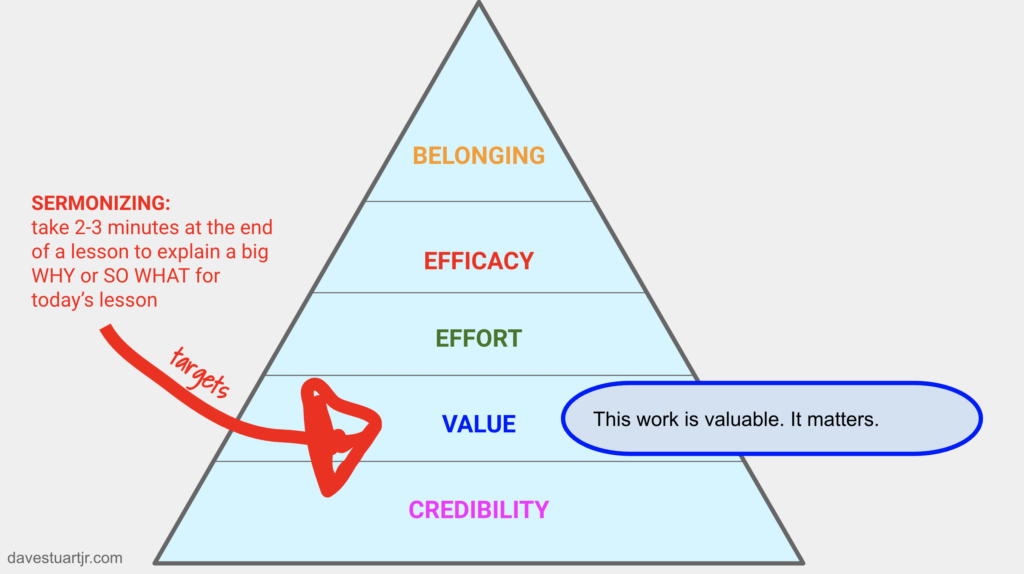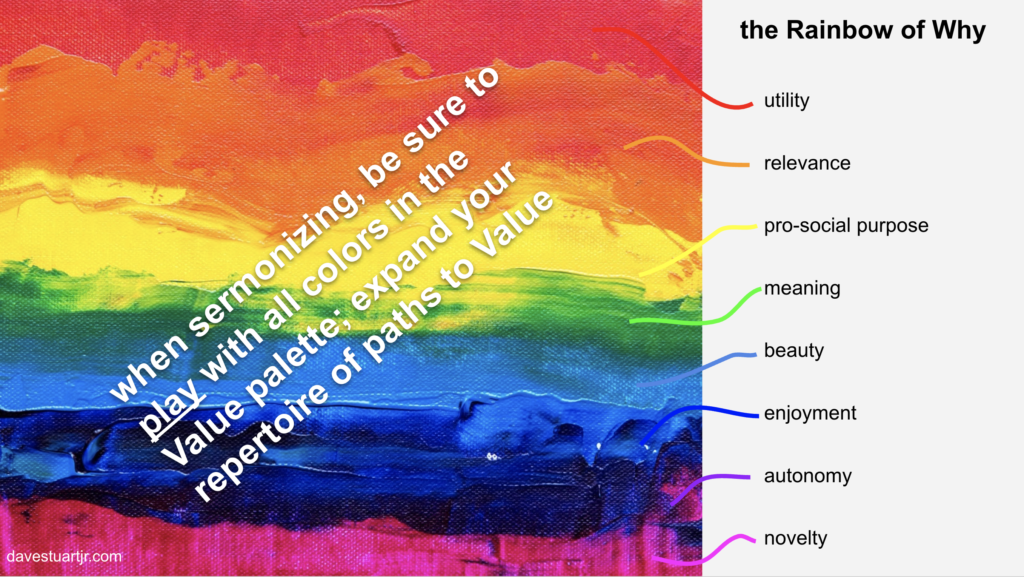What it is: For the last 2-3 minutes of class, high school ELA teacher Brian Sztabnik takes a crack at explaining the lasting significance of today’s lesson: how a centuries-old poem speaks to today; how a mechanically-sound sentence is a thing of simple beauty; how essay-writing teaches us to explore ideas.
That’s it.
What it targets


(Laughably imperfect examples of) What it looks like
Why it's brilliant
From the five key beliefs standpoint, what Brian is doing here is sending a daily signal about the Value of learning in his class. He’s routinized consistent signal-sending, and as a result his students get 90 of these Value signals per semester, 180 or so per year. This is a massive amount of high-quality Value signals for an inexpensive amount of time (the last 2-3 minutes of class, which are often difficult minutes from an engagement standpoint anyway).
But honestly, I think the person that gains the most from this is Brian as a professional:
- By making this a routine, Brian ensures daily practice for himself in explaining the deep Why behind a lesson.
- Because Brian holds himself to doing this at the end of every lesson, he’s bound to plan lessons and curricula with this at least a bit in view. This makes him habitually think about the value his lessons offer his students — he can’t do a throw-away lesson because how do you sermonize something like that?
- Brian’s forcing himself to get creative and have fun with Value — if there’s a mini-sermon at the end of every lesson, his students won’t let him use the same tack every time; they’ll start zoning out if he does that. So he’s got to be clever — go for beauty today, novelty tomorrow, autonomy the next.
- Even Brian’s label for this strategy — “sermonizing” — helps him to internalize that what he represents is more than an English curricula. Instead, he represents the inherent goodness of an education, the deep beauty of learning, the fundamental relevance to all human beings of every discipline.
So, I love this. Give it a try.
Leave a Reply